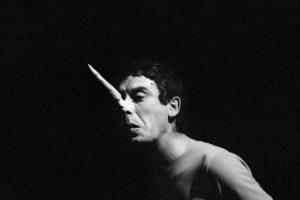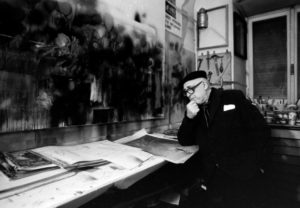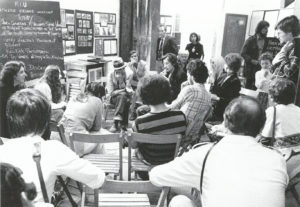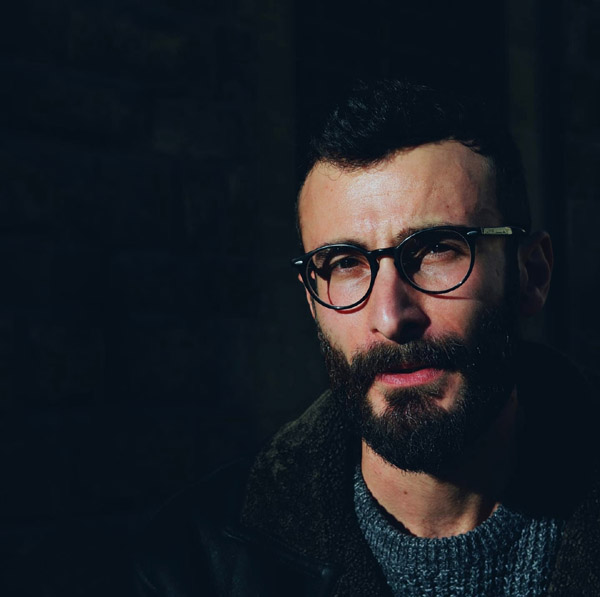When the artists of Arte Povera were presented for the first time in 1967 at La Bertesca gallery in Genoa, Germano Celant announced in the exhibition catalog the advent of a “new humanism”. In an article that appeared shortly after on Flash Art, he described the artist as a “guerrilla [who] wants to choose the place of combat, possess the advantages of mobility, surprise and strike”. If before these purposes could concern only the “category” of artists, today it can no longer be so: the term “humanism” must necessarily refer to man in his total and diversified complexity. Jannis Kounellis, one of the protagonists of Arte Povera, had also noticed that, in the context of his research, man was what interested him most.
The importance of the human being’s value then returns in the words of Joseph Beuys: “every person is an artist”. This belief – to “read it well” as Friedrich Nietzsche would say – hid the hope, and ultimately the awareness, that sooner or later something could change. Radically changing the thought by letting yourself be carried away by an innate creative impulse is a long process, certain, but not impossible to implement. To undertake it, perhaps, it is necessary to rely on that Nietzschean “will to power” which has nothing to do with the desire for power, but which, on the contrary, concerns the active acceptance of life, and the ability to know how to constantly shape and renew the world. Carmelo Bene, a few years later, will even make a difference compared to Beuys’ words. Inspired by the dictates of the philosopher Arthur Schopenhauer, he will write that “the destiny of every work of art is not in the work = IT IS ART AT WORK! It is the production of the artist who transcends the OPERA […] The author is never the author of his own work, he is a living masterpiece”: hence the belief, always carried forward, according to which” everyone it must be a masterpiece “.
From these premises, the new mtn | museo temporaneo navile Bologna project L’essere umano come opera d’arte (The human being as a work of art) was born. In conjunction with the reopening, which took place on June 5, 2020 with the Intramondo exhibition dedicated to the artist Sabrina Muzi, Marcello Tedesco and Silla Guerrini, founders of the museum, thought of a Certificate of Work of Art downloadable directly from the website and dedicated to each person “as a human being in this historical period”. The idea, however, does not arise only from the important reflections that have taken place throughout history, but also from considerations about the historical moment we are going through. Indeed, the possible consequences that could drag on impose an urgent examination of the topic. And, despite the atrocities that accompany it – or perhaps for this reason – the moment appears most propitious: the period of semi-immobility was in fact decisive to allow a lucid reflection on ourselves and on the role we will have to play in the future, and we can’t let everything go unnoticed.
Much has changed in recent weeks – human relationships, habits, city life – but what calls for a decisive change of course is above all our person: the events that occurred a few days ago overseas give us another, dramatic testimony. We cannot pretend that everything has remained unchanged, and even art cannot do it – those who believe that it is detached from the dynamics of life make a mistake. Something is perhaps starting to move: the discussion tables around the value of art, and the new digital guise taken on by the artistic experience, make us understand how vital its presence is for us. But more is needed. Of course, this latter aspect has also contributed to making everything even more alive: at the expense of what one might think, the network is not only made up of data, but also, and above all, people. The future requires us to reflect on these inevitable transformations, but if we want to finally start a “new humanism” we must focus precisely on the importance of man.
The idea of the Certificate of Artwork, in line with all the experiences that have marked the path of mtn | museo temporaneo navile, however, does not represent a game, nor a subversive operation. On the contrary, it is a gesture that intends to restore awareness to the human being. This entails, at the same time, a greater responsibility: precisely because of its unique and extraordinary character, man must take charge of the choices he decides to make. The Polish sociologist Zygmunt Bauman clarified this aspect in his writing The Art of Life: “Every artist of life is asked to accept (just like the artists) all responsibility for the result of his work, collecting its merits or faults” – even the latter, in fact, argued, “whether we know it or not, whether we like it or not”, that “our life is a work of art”.
Not surprisingly, the value of the Certificate of Art corresponds to $ 450.3 million: a symbolic amount equal to that achieved by Leonardo da Vinci’s Salvator Mundi in the 2017 Christie’s New York auction, in addition to representing a provocation, underlines the burden, for each person, of constituting a work of art, of interpreting something that cannot be separated from reality. In fact, art is nothing more than a form of interpretation, etymologically speaking, because it shows, manifests what is apparently hidden or incomprehensible: hence, the urgency to elaborate “new narratives”, as written in press release of the project. Art must go back to talking about life, it must rediscover that “charge of understanding life”, as Cesare Zavattini said, so that it continues to remain alive. This is not possible if you think of a return to the already been, of what it was before: a re-birth, however, is what we need. We should all be spokesmen for this re-birth, because, as Celant always wrote in 1967, “physical presence, behavior, in their being and existence, are also art”.
Info:
L’essere umano come opera d’arte (The human being as a work of art)
mtn | museo temporaneo navile, via John Cage 11/A-13/A, Bologna
info@museotemporaneonavile.org
www.museotemporaneonavile.org
 Carmelo Bene, Pinocchio, Teatro Centrale, Roma, 1966, ©Claudio Abate
Carmelo Bene, Pinocchio, Teatro Centrale, Roma, 1966, ©Claudio Abate
 Cesare Zavattini in his studio di via Sant’Angela Merici a Roma, 1978, @Archivio Cesare Zavattini, Biblioteca Panizzi, Reggio Emilia
Cesare Zavattini in his studio di via Sant’Angela Merici a Roma, 1978, @Archivio Cesare Zavattini, Biblioteca Panizzi, Reggio Emilia
 Joseph Beuys during a workshop at FIU (Free International University) held during Documenta 6, Kassel, 1977, @Documenta Archiv-Joachim Scherzer
Joseph Beuys during a workshop at FIU (Free International University) held during Documenta 6, Kassel, 1977, @Documenta Archiv-Joachim Scherzer
 mtn – museo temporaneo navile, Bologna
mtn – museo temporaneo navile, Bologna
 mtn – museo temporaneo navile, Bologna
mtn – museo temporaneo navile, Bologna

Born in Campi Salentina (LE). After the three-year degree in Technologies for the Conservation and Restoration of Cultural Heritage at the University of Salento, I attend the Master of Science in Visual Arts at the University of Bologna. I collaborated with Galleria d’Arte Maggiore g.a.m. (Bologna) and with MUMA – Museum of the Ancient Sea in Nardò (LE). I am interested in events concerning contemporary art, in particular those related to video-photographic and performative practices. I write for ATPdiary and Juliet Art Magazine.






NO COMMENT